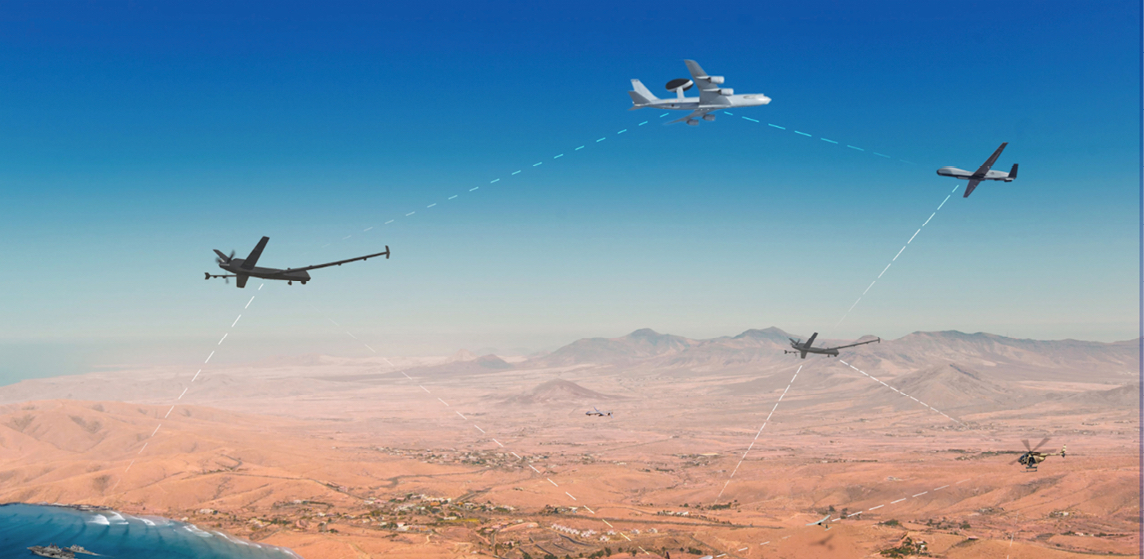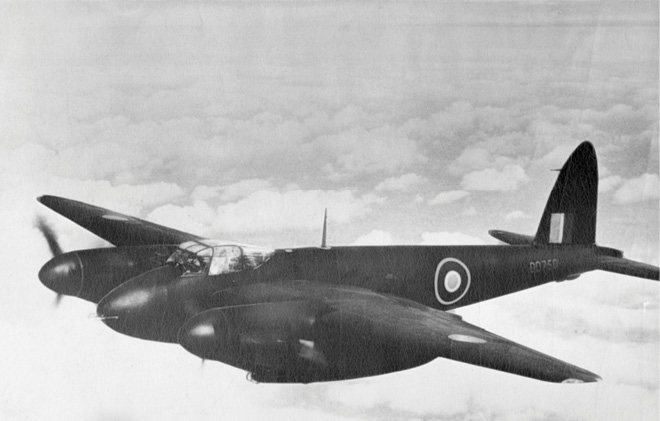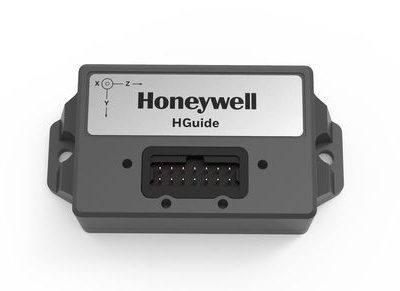
Remote ID for commercial drones gets a lot of press these days, but few talk about ID for military drones. That is probably because most folks think the DOD solved its version of Remote ID or “Identification Friend or Foe” (IFF) in World War II. But I think we have been letting the DOD off the hook lately because, yes, it solved IFF for manned aircraft and large drones long ago, but what about smaller drones? Swarming drones? Attritable drones? Just like civil drones without Remote ID, small military drones without Remote ID look the same on radar scopes—just “dots” with no ID. That makes it tough to tell which dot is friendly and which is not so friendly.
Before delving into IFF options for smaller military drones, strap into your harness because a bit of history is in order.
IN THE BEGINNING
IFF has been around for a long time. As you would imagine, anything with the word “foe” in it is a British invention. The Brits invented IFF soon after inventing radar in the late 1930s. The Royal Air Force first used an IFF variant with the even-more-British name of “pip-squeak” during the Battle of Britain. However, the most widely used IFF system was the Mark III that pioneered techniques still used today.
Mark III IFF transponders on Allied aircraft responded to “interrogations” from a radio transmitter co-located with an Allied radar. The interrogation transmitter synchronized with the radar so that every time the radar sent out a pulse, the interrogator sent out a radio signal. Radar operators could calculate the position of an aircraft when the radar pulse bounced off the aircraft’s skin and returned to the source. They could tell if the aircraft was a friend when the interrogator signal elicited a radio response from the Mark III transponder on the aircraft. The coded IFF response showed on the radar screen alongside the radar track, allowing Allied controllers to identify all the friendly aircraft in range. Radar blips with the correct IFF response were friendlies, and blips without IFF were either “bogies” (unknown aircraft) or “bandits” (enemy aircraft). Both military and civil authorities use a variant of this system around the world today.

In an early IFF exploit, World War II’s De Havilland Mosquito night fighter brought chaos to the Luftwaffe by mimicking its transponders.
Of course, anything involving electronics in wartime was immediately subject to electronic countermeasures. To keep their IFF transponder codes out of enemy hands, the Allies fitted explosives to the transponders so aircrew could destroy them before crashing. Despite the explosives, the Luftwaffe eventually recovered enough equipment to crack the code on Mark III transponders and began tracking Allied aircraft using their own transponders. Fortunately, this was late in the war and the Allies simply switched to the U.S. Navy Mark IV transponder. The RAF was more successful in exploiting Luftwaffe IFF. RAF Mosquito night fighters routinely carried equipment that could mimic the Luftwaffe FuG 25a Erstling transponders, allowing them to home in on German night fighters, causing chaos in the skies over Germany.
The cat and mouse game of developing better IFF transponders as the enemy cracked the previous system continued through the Korean War, Cold War, Vietnam War and even coalition operations over the Balkans and Southwest Asia, culminating in the Mark XII IFF system used by most U.S. and Allied air forces today. Mark XII is a complex system capable of operating several “modes” or types of operation listed in the table above to allow operations in both military and civil airspace:
During the 1990s many Allied air forces began using civilian Mode S responses as part of their IFF system. Mode S allows aircraft to return greatly increased amounts of data, including the aircraft’s position, in response to a query. A constantly broadcasting version of Mode S, the automatic dependent broadcast system (ADS-B) became mandatory equipage for the DOD in January 2020. Military Mode V is simply a cryptographically encoded version of Mode S data that can either respond to query only or broadcast like ADS-B.
Managing the cryptographic keys and ensuring that military transponders function perfectly in any environment, anywhere on earth, and with any compatible Allied military service, is a massive job. The DOD uses the Air Traffic Control Radar Beacon System Identification Friend or Foe (AIMS) program office to rigorously test Mode V transponders. Unfortunately, until last month the testing program was so rigorous that only a handful of relatively large Mode V transponders passed, the smallest of which weighs seven pounds and is roughly the size of a loaf of bread. Seven pounds is not much to a B-52, F-15 or even an unmanned RQ-4 Global Hawk. Seven pounds is a tremendous weight for a small UAS. Seven pounds of fuel would have gotten the first UAS across 60% of the Atlantic.

ANSWERING ADVERSARIAL COMPLEXITIES
Up until coalition forces started to deal with adversary UAS over the Arabian Gulf, Iraq, Syria, Libya and Yemen, the DOD didn’t think it had a problem because its smaller UAS were short-ranged and only operated near friendly forces. Lack of IFF on coalition small UAS became an obvious problem when U.S. Navy ships had problems telling their own RQ-20A Pumas from Iranian Revolutionary Guard Ababil UAS over the Arabian Gulf. NATO countries had trouble differentiating Italian MQ-1s from Turkish TB2s from Russian Orlan-10s over Libya. Homemade Islamic State fixed-wing UAS over Syria and Iraq looked just like coalition RQ-11 Raven UAS until it was too late to engage them.
To their credit, the U.S. Army and Navy moved quickly to find a way to put Mode V transponders on some of the smallest UAS used by U.S. forces. The Army and Navy set up a joint program office to find a Mode V “microtransponder.” The effort yielded two AIMS-certified Mode V transponders that are MUCH smaller than a loaf of bread
Sagetech Avionics (see “Law-Tech Connect” from this issue) was first to develop an AIMS-certified Mode V transponder. Sagetech was a bit of a traditional choice given its experience working with the U.S. Navy’s MQ-27 ScanEagle. Its MX-12B transponder weighs a little more than 6.7 ounces (190 grams) and is just 3.4″ H x 2.5″ W x 1.0″ D. The accomplishment is an impressive 93% reduction in size, weight and power (SWaP) compared to conventional Mode V transponders.
A very interesting choice represents one of those few times commercial UAS technology is superior to military tech. uAvionix is a startup that specializes in retrofit avionics to help general aviation aircraft comply with the FAA’s 2020 ADS-B mandate. Luckily, uAvionix didn’t forget unmanned systems and developed a quarter-sized pingRX ADS-B micro receiver for very small UAS (think DJI Phantom 4s). PingRX receivers are a legend in civilian UAS circles for only weighing 0.17 ounces (5 grams). Over time, uAvionix began to develop FAA-certified avionics for civil aviation, with the latest iteration being the ping200X Mode S ADS-B microtransponder for UAS weighing only 1.9 ounces (54 grams) and 3.25“ x 1.8“ x .5“, making it the world’s smallest Mode V transponder.
The tight size constraints of the civilian small UAS transponder market clearly paid off for uAvionix’s Mode V microtransponder. As noted above, the company’s smallest AIMS-certified Mode V transponder is astoundingly small. Expressed in fighter pilot lingo, it weighs less than a shot of whiskey and is smaller than a deck of cards, yet it still manages to output 250 watts. Very impressive!
The U.S. Army and Navy are already moving out with Mode V requirements for their smaller UAS. Indeed, rumor has it Mode V will be a requirement for the Army Future Tactical UAS program. However, what about the U.S. Air Force?
The U.S. Air Force was not interested in Mode V microtransponders when the Army and Navy started a joint program because the USAF had relatively few small UAS at the time. That attitude is changing as the Air Force embraces low-cost attritable and swarming UAS. I’ll write more about what the USAF plans for these UAS in my next column, but the USAF now realizes a returning formation of attritable UAS or a swarm of UAS over a target area will probably sow chaos as coalition air defenses try to sort their own drones from enemy aircraft, as neither broadcasts IFF. Indeed, part of the USAF strategy for low cost/swarming drones is to confuse enemy air defenses and force them to engage cheap USAF drones with expensive missiles. Without Mode V transponders, these friendly drones will probably cause equal confusion to friendly air defense forces.
That was a lot of background to get to the good stuff—which is, I predict a bright future for Mode V microtransponders. True, the first customers will be smaller military drone programs, but I guarantee there isn’t a military manned aircraft or larger drone designer who would choose a 7-pound transponder over a 2- or 7-ounce one. Who KNEW that all those endless debates over civil drone Remote ID would spur the innovation of vastly improved transponders for the DOD’s version of drone Remote ID?!






